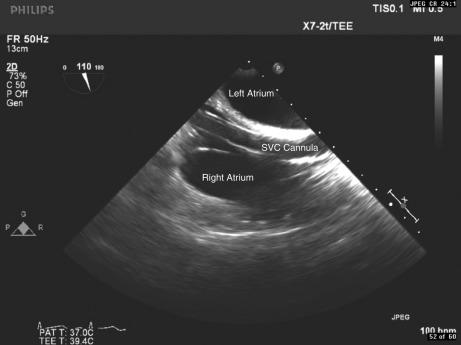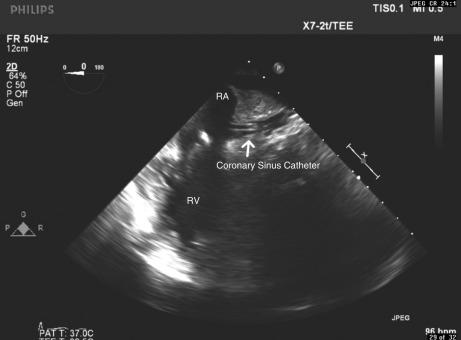Physical Address
304 North Cardinal St.
Dorchester Center, MA 02124
The CPB circuit functions as the temporary equivalent of the native cardiopulmonary system. The CPB circuit allows for perfusion of the patient's vital organs, while oxygenating the blood and removing carbon dioxide (CO 2 ). Isolation of the cardiopulmonary system allows for surgical exposure of the heart and great vessels along with cardiac electrical silence and a bloodless field.
The CPB circuit has a venous line that siphons central venous blood from the patient into a reservoir. Blood reaches the venous reservoir via gravity or vacuum assist. Blood is then passed through an oxygenator, CO 2 removed, and then returned to the patient's arterial circulation. The pressure needed to perfuse the arterial circulation is generated by either a roller head or a centrifugal pump. The flow is usually nonpulsatile although some roller pumps can deliver pulsatile flow. The machine also has roller head pumps for cardioplegia administration, a ventricular vent to drain the heart during surgery, and a pump sucker to remove blood from the surgical field. In addition, the circuit contains filters for air and blood microemboli, because both can cause devastating central nervous system injury if delivered to the arterial circulation. A heat exchanger is present to produce hypothermia on bypass and warm the patient before separating from CPB. The venous reservoir must never be allowed to empty while on CPB because a life-threatening air embolism could result.
Mild: 32°C to 35°C
Moderate: 26°C to 31°C
Deep: 20°C to 25°C
Profound: 14°C to 19°C
Typical CPB temperatures range from 28°C to 34°C Profound levels of hypothermia (14°C–19°C) is used for total circulator arrest, although this level of hypothermia is not necessary for all circulatory arrest cases.
Adverse effects of hypothermia include coagulopathy because of platelet dysfunction and decreased synthesis and kinetics of clotting enzymes, hypocalcemia because of decreased metabolism of citrate, dysrhythmias, increased risk of infection, decreased oxygen unloading from hemoglobin, potentiation of neuromuscular blockade, and impaired cardiac contractility.
Systemic oxygen demand decreases 9% for every degree of temperature drop. Hypothermia, therefore, allows for a lower CPB pump flow, while providing adequate oxygen delivery to vital organs. The main concern with CPB is the prevention of myocardial and central nervous system injury, along with renal and hepatic protection.
AKI is a common complication following CPB with an incidence of 20% to 30%. Risk factors include advanced age, female gender, preoperative renal insufficiency, ejection fraction less than 40%, diabetes mellitus, hemodilution on CPB, use of an intraaortic balloon pump, CPB duration, and complex cardiothoracic surgeries. Of these risk factors, preexisting renal dysfunction has the highest risk for postoperative AKI.
There is no full-proof method for preventing AKI after CPB. Recommended methods include identifying high-risk patients, optimizing renal perfusion (e.g., goal-directed perfusion), avoiding a long CPB duration, and avoiding nephrotoxic medications.
GDP is based on the theory that maintaining an adequate mean arterial pressure (MAP) does not guarantee adequate oxygen delivery to end organs. GDP evaluates multiple metabolic parameters, but in its simplest form, GDP assesses oxygen delivery (DO 2 ) and carbon dioxide production (VCO 2 ). DO 2 can be altered by changing pump flow (i.e., cardiac output) and hemoglobin concentration. In the setting of tissue hypoxemia, acidosis develops and as a result VCO 2 increases. A DO 2 less than 270 mL/min/m 2 and a DO 2 /VCO 2 ratio of less than 5 is associated with AKI after CPB.
Venous blood is typically obtained through cannulation of the right atrium, using a dual-stage cannula that drains both the superior and the inferior vena cava. Alternatively, for open-heart procedures, bicaval cannulation is used with direct, separate cannulation of the superior and inferior vena cavae. Arterial blood is returned to the patient via the ascending aorta proximal to the innominate artery. The femoral artery and vein can also be used as alternative cannulation sites. The drawbacks to femoral bypass include ischemia of the leg distal to the arterial cannula, inadequate venous drainage, possible inadequate systemic perfusion secondary to a small inflow cannula, and difficulty in cannula placement owing to atherosclerotic plaques. Axillary artery cannulation can be used for repeat sternotomies and is often carried out before the sternotomy to allow for arterial fluid or blood administration from the CPB machine during the sternal dissection if necessary. Cannulation of the brachiocephalic or axillary artery may be used if circulatory arrest is planned.
Venous drainage is generally achieved by placing a single-stage catheter in the right atrium or superior vena cava via the femoral vein ( Fig. 62.1 ). The drainage holes in the catheter should always sit in the right atrium. Venous drainage can be augmented using a vacuum assist system on the bypass machine. If needed, additional drainage may be achieved by placing a venous cannula via the internal jugular vein. In lieu of an internal jugular cannula, an endopulmonary vent catheter may be placed for additional drainage if the surgical approach is through the left atrium. Arterial cannulation can be peripheral (generally femoral) or direct (through thoracotomy). There are three general systems for antegrade cardioplegia administration: (1) either placement of a balloon in the aortic root that occludes and delivers cardioplegia, (2) cross-clamping through the sternotomy with direct placement of an aortic root vent, or (3) if the surgery is an aortic valve replacement, the surgeon can directly apply cardioplegia to the coronaries after the root is opened. Retrograde cardioplegia can be delivered by direct cannulation of the coronary sinus, through the thoracotomy incision or via a percutaneous technique ( Fig. 62.2 ).


Anesthetic strategies take into consideration the degree of systolic dysfunction, the extent of coronary disease, the magnitude of valvular disease, and the overall exercise tolerance. Patients undergoing CPB are considered high-risk for intraoperative awareness; however, this is likely from the previously popular high-dose opioid technique. The conduct of cardiac anesthesia has moved away from such techniques of the past, which involved high-dose opioid and long-acting neuromuscular blocking agents, as they were associated with prolonged time to extubation in the intensive care unit and delayed ambulation. Techniques that mitigate these problems and facilitate quick extubation (i.e., < 4 hours postoperatively) and early ambulation are known as fast-tracking . This involves administering short-acting and more carefully dosed neuromuscular blocking agents and opioids. In addition, medications, such as acetaminophen, ketorolac, dexmedetomidine, and ketamine along with regional techniques, such as parasternal blocks placed by the surgeons may be used for opioid sparing analgesia.
Become a Clinical Tree membership for Full access and enjoy Unlimited articles
If you are a member. Log in here